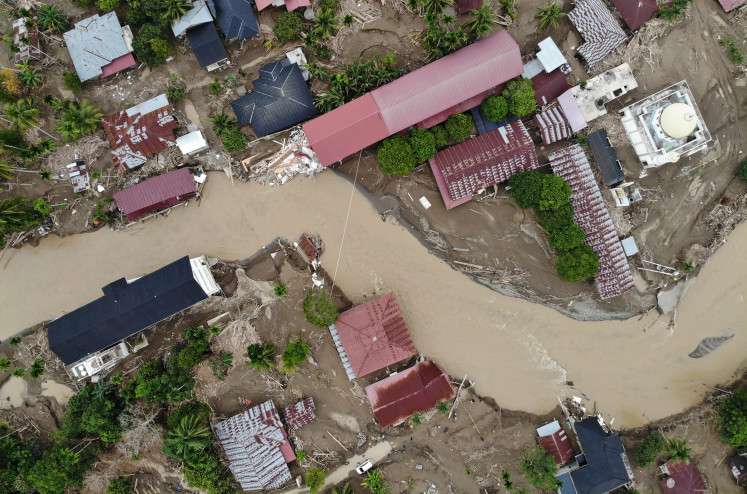Popular Reads
Top Results
Can't find what you're looking for?
View all search resultsPopular Reads
Top Results
Can't find what you're looking for?
View all search resultsTip of Papua famine iceberg
The government knows that extreme weather events can cause crop failures almost every year but does little to prevent and mitigate the impacts of them.
Change text size
Gift Premium Articles
to Anyone
I
n Papua, which is known for its abundant natural resources, around 7,500 people of the outlying districts of Agandugume and Lambewi in Puncak regency, Central Papua have been scrambling for food for months. A mix of drought and cold weather in June caused the key crops of yam and taro to fail or rot, forcing locals to eat spoiled tubers.
According to the National Disaster Mitigation Agency (BNPB), at least six people, including a baby, died from dehydration or diarrhea. More are falling ill because they had to walk for two days to the closest neighboring district for food, further deteriorating their health.
The government knows that extreme weather events can cause crop failures almost every year but does little to prevent and mitigate the impacts of them.
While on a visit to bring disaster relief materials to the affected districts in Puncak regency, Coordinating Human Development and Culture Minister Muhadjir Effendy said the drought and cold weather was a yearly weather phenomenon that usually occurs between May and July.
The temperature drop can happen for weeks and is immediately followed by a lack of rain, hindering local farmers from planting food crops. Puncak, which means summit in English, is one of the only places in Indonesia where snow falls because of the high altitude.
The famine in Puncak is not the first in Papua. Another drought hit Lanny Jaya, now part of Papua Highlands province, last August, and deprived hundreds of people in Kuyawage district of access to food.
At least three people died from hunger-related health issues. Jakarta, however, denied that the locals were famished and lacking food, but said that they instead died because of severe illnesses worsened by extreme weather conditions.
In 2018, a measles outbreak and malnutrition hit Agats in Asmat regency, now part of South Papua province. Some 800 children became sick, and at least 100 died.
The famine in Puncak comes as President Joko “Jokowi” Widodo promises to develop the easternmost region.
Jakarta disburses more than Rp 10 trillion (US$659 million) per year in special autonomy funds and various infrastructure projects in the region. One of Jokowi’s flagship projects on the island is the food estate, including a corn field in Jayapura regency that the President visited last month.
During the visit, he emphasized that a good food production system would lead to a more prosperous eastern Indonesia. He, however, stopped short of answering the question of how to distribute those food materials across the region, including to highland areas like Puncak. The affected district can only be reached on foot from Sinak airstrip, where authorities have been dropping disaster relief.
A long-term solution is necessary to prevent further humanitarian disasters from occurring in other districts of Papua. It seems that the government has made, or is at least thinking of, the first step.
Realizing that the cold weather might come again every year, Muhadjir said he would advise the President to order the construction of a food warehouse near the Sinak airstrip. This way, authorities can easily transport and stock up on food before crop failure occurs.
Yet, questions remain as to how often the government will supply those resources. Do they have sufficient resources to fly food to the mountainous regions? In the current climate crisis, where extreme weather events like damaging cold snaps in Puncak might happen more often, will we be able to produce and distribute enough food to all of Papua’s districts?
The government needs to find the answers to these questions soon. Otherwise, we will have another headline of famine in Papua next year, or sooner.











